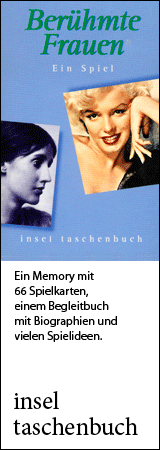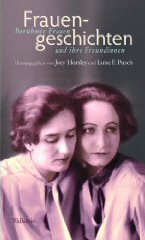Biographies Adele Schopenhauer

born on June 12, 1797 in Hamburg
died on August 25, 1849 in Bonn
German writer and silhouette artist
175th anniversary of her death on August 25, 2024
Biography
Adele Schopenhauer had seemed to fade more and more into the background as the spotlight shone first on her dazzling mother, the writer and salonnière Johanna Schopenhauer, and then on her famous brother, the philosopher Arthur Schopenhauer. It is only in recent years that the public’s interest has been revived with several authors choosing to focus on Adele Schopenhauer; most notable among the publications is Angela Steidele’s impressive double biography of Adele Schopenhauer and her partner Sibylle Mertens-Schaaffhausen, Geschichte einer Liebe (A History of a Love).
Adele Schopenhauer was born in Hamburg on June 12, 1797 as the second child of the merchant Heinrich Floris Schopenhauer and his wife Johanna. After the father's suicide in 1805, mother and daughter moved to Weimar, where Johanna Schopenhauer established a literary salon and welcomed the city's educated elite – including the “Prince of Poets” Johann Wolfgang von Goethe – for tea and conversation. Beginning in 1806, Adele enjoyed a close and intense friendship with Ottilie von Pogwisch; the two shared many artistic interests. Adele's papercut art was widely admired in Weimar society.
Johanna and Adele Schopenhauer had invested their entire fortune in the Muhl bank in Danzig. When the bank became insolvent in 1819, mother and daughter feared they would lose everything, but were able to save some of their fortune through a settlement. Arthur Schopenhauer, who had already withdrawn most of his own assets from the bank, refused to take part in the settlement, thereby risking the failure of the settlement as a whole. The arguments over this led to a break with Adele - Johanna Schopenhauer had already ended all contact with her son several years earlier.
As a young woman, Adele experienced a series of unhappy infatuations with various men, which she detailed in Tagebuch einer Einsamen (Diary of a Lonely One). She felt abandoned by Ottilie after her friend married August von Goethe. She herself did not marry, and the joint assets of mother and daughter were stretched as Johanna continued to insist on a lavish lifestyle.
In 1828, Adele Schopenhauer travelled to the Rhineland, where she met the very wealthy and unhappily married Sibylle Mertens-Schaaffhausen. The love that quickly developed between the two women led to Adele and Johanna Schopenhauer moving to the Rhineland in 1829. For two years Sibylle and Adele lived happily together until a crisis resulted in their separation in 1831. In the years that followed, Adele twice more pinned her hopes in vain on a marriage.
Adele published her first novel Die lothringischen Geschwister (The Lorraine Siblings) in 1835. After Johanna Schopenhauer's death in 1838, Adele released works penned by her mother. Shortly thereafter she worked on her own novel and, together with Walther von Goethe, on an opera libretto, Erlinde. In 1841 she published Theolinde. Eine Erzählung aus der nächsten Vergangenheit (Theolinde. A Tale from the Near Past). Her long-standing acquaintance with Annette von Droste-Hülshoff developed into an intensive working and friendly relationship.
Adele Schopenhauer and Sibylle Mertens were reunited in 1842 following the death of Louis Mertens, and they remained a couple until Adele's early death. Adele had been suffering from an undiagnosed cancer for years; several treatments at the health resort in Carlsbad had little effect. Nevertheless, in 1844 Adele Schopenhauer succeeded in publishing both her Haus-, Wald- und Feenmärchen (Tales of the Home, the Forest, and of Fairies) and the novel Anna.
From the fall of 1844, Sibylle and Adele lived in Italy, where Adele wrote feature articles, essays on art history and a travel guide to Florence until a dramatic decline in her health forced a return to Germany in 1848. She died on August 25, 1849 in Sibylle Mertens’ house in Bonn. She was only 52 years old.
(Text from 2014, translated with DeepL.com; edited by Ramona Fararo, 2024; please consult the German version for additional information, pictures, sources, videos, and bibliography.)
Author: Renate Kraft
If you hold the rights to one or more of the images on this page and object to its/their appearance here, please contact Fembio.



